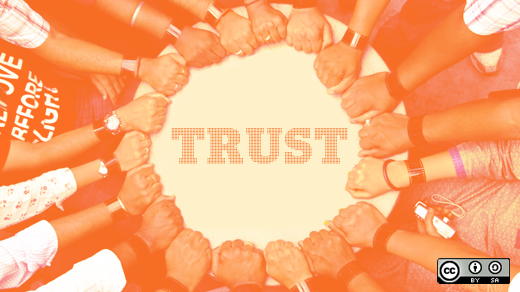So much of the leadership conversation centers around the question “how do I get more out of my people?” I don’t think I’ve been at a conference or sat in on a conversation with business leaders where the subject—and that exact phrase—hasn’t come up.
Now, without a doubt, bringing forth the full ingenuity, initiative, energy, and passion of every person in the organization is one of the most urgent agenda items for leaders in every realm of endeavor. But when it comes to unleashing the best gifts of people, that mechanistic metaphor of extraction (“how do I get more out?”) and, more importantly, the approaches it engenders, quickly break down.
Which is why it’s so refreshing to encounter a leader who brings an entirely different mindset (and vocabulary) to the challenge of shifting from an organizational model designed to generate rote productivity to one designed to yield genuine creativity, discovery and breakthrough (and to support human flourishing in the process).
This article was originally posted on the Management Innovation eXchange (MIX), an open innovation project aimed at reinventing management for the 21st century.
Ivy Ross, the newest MIX Maverick, has been tackling that challenge with powerful results in a range of organizations for three decades. A veteran design executive who has injected new life into some of the world’s most iconic brands—Calvin Klein, Swatch, Coach, and Mattel—she has recently shifted from head of global marketing for Gap, Inc. to leading innovation efforts there as the company’s “creative catalyst.” An award-winning artist with a National Endowment for the Arts grant to her name, Ivy’s unique metalwork is featured in the permanent collections of several museums, including the Smithsonian in Washington, D.C. and the Cooper Hewitt in New York.
Even more impressive is Ivy’s inventive and ever-evolving approach to cultivating creativity, collaboration, resilience, and humanity inside even the most convention-bound organizations. Ivy gets what so many leaders don’t: productivity and creativity are not about what you can get out of people but what you can give them—and how you can get out of their way.
In other words, innovation is about how we feed and free people at work.
“CEOs love to talk about creativity and innovation,” says Ivy. “And when they do, they’re usually talking about layering in an innovation process. But innovation isn’t about process, it’s about people. It starts with creating a field of trust and then freeing people to play and explore. Specifically it’s about the freedom and the conceptual ability to see things differently. Innovation starts with permission to question, permission to shake things up, permission to look at familiar things in new light. Those are just fundamental freedoms that are completely opposed to the general corporate attachment to ‘the way we do things around here.’”
Ivy has spent her career cultivating that “field of trust” and those freedoms. At Mattel she created an entirely original approach to unleashing innovation and unleashing people—a deeply immersive and astonishingly productive creation tank called Project Platypus. That not only spawned a half dozen hit products (and 100s of millions in sales for Mattel), it also inspired a now-thriving program at Procter & Gamble (where Ivy sits on the design board) called The Clay Street Project. More importantly, it produced a set of insights and approaches to designing work, fostering collaboration, and sparking creativity with the potential to change the way organizations invent the future.
Ivy shares many of these insights in her series of maverick videos, but I’ll just touch on a couple here.
Innovation begins with connection
Two of the most glossed over lies of corporate life: putting people on the same team automatically yields “teamwork” and your job title is an accurate description of what you do and what you have to offer. Ivy’s approach is to put individual genius ahead of job titles and to counter the toxic fear and competitiveness bred in too many organizations with deeply personal connections. A simple example:
When Ivy was confronted with the challenge of moving her entire Old Navy design team from New York to San Francisco (and incorporating some 60 new designers into the group), she devised a clever and quick way to jumpstart bonds among teammembers. On the first day of work at the new digs, she asked each person to bring in his or her favorite object and then made a short video of each person talking about that object, themselves, and what designing clothing meant to them. The videographer edited each interview down to a potent minute and created a kind of video facebook that sat on the desktop. So, if you were going into a meeting with essentially six strangers you could click on their pictures and hear about who they were and what they loved—whether it was yoga or antique buttons or cooking.
Says Ivy: “It was amazing to see how quickly connections were made just by giving little bits of information—the kind of information you wouldn’t normally learn at work. That gave people a way to connect.”
It’s a simple exercise that packs a powerful insight: the urgency and competitiveness that rule so much of corporate life crowds out genuine human connection. But it’s that kind of connection that truly puts people on the same team. If you want fearless, collective creativity, Ivy argues, the most important thing you can do is to create a “field of trust” that opens people up to each other and to new ideas.
The “fundamental freedoms”
If trust is the first essential ingredient for creating a culture of innovation, freedom is the second. So much of organizational life is “about executing realities rather than creating possibilities,” says Ivy. “The strategy process starts with a well-defined brief and a target: here’s the consumer and the benefit we’re after, here’s the niche in the market, here’s the technology. The message is basically, ‘here’s what we want.’ And that’s exactly what they get.”
Of course that prescriptive approach will never yield something different enough to make an impact on the world. For that, organizations need a very different process of creation—one that starts with finding the freedom to dwell in possibility, explore unlikely directions, ask disruptive questions, and even play a little. “Innovation is really about being free to play and explore,” says Ivy. “Corporations don’t know how to play. They don’t know how to explore—which means they have a hard time matching up to all the new things going on in the world.”
In other words, most organizations are like Tiger Moms—drill sergeants insistent on rigor and structure in service of clear goals. Ivy sees her role as more Willy Wonka—coaxing forth the “child of wonder” in even the most hardened corporate citizen. “It’s like the Marines,” she says. “We break people of the habits they inevitably learn in organizations. It takes a strong individual to fight the suction of corporate life. We just reverse the suction by tapping into the oil well of each person’s hidden gifts.”
Often that starts with an energizing and mind-blowing infusion of insight, resources, stimuli, and collaborative methodologies. Whether she’s working on the challenge of developing an entirely new category of toys for girls or re-introducing denim to the world, Ivy is fearless when it comes to playful exploration. If that requires clowns, Japanese tea ceremonies, improv artists, Chinese face readers, research on living systems, or the science of sound and harmonic vibration, then she’s game.
The point? When you shift your focus from output—what can we get out of people? what’s the product?—to input—how can we feed people with insight, the freedom to explore, trusted relationships?—you stand to expand both the quality and quantity of your output. It’s a phenomenon Ivy’s witnessed over and over again in her work. Simply put: the organizations and leaders that focus on human flourishing stand to flourish in the future.







3 Comments